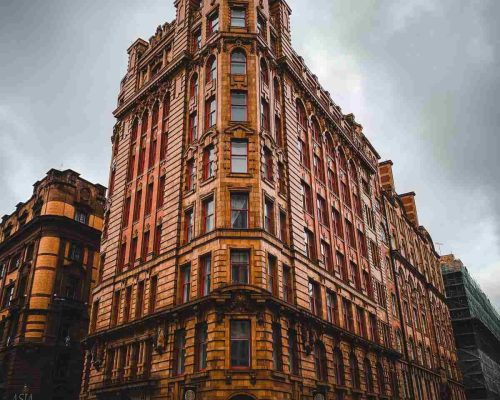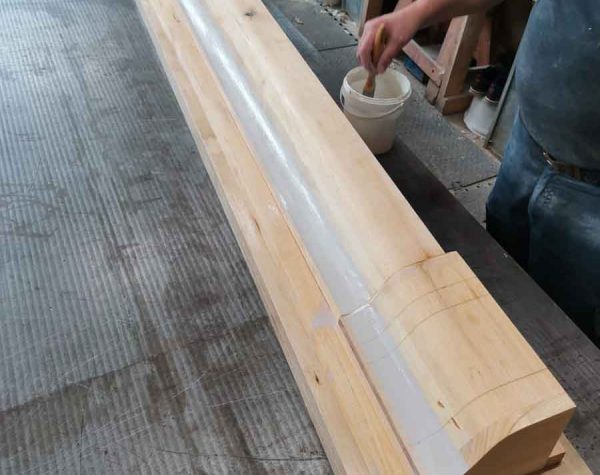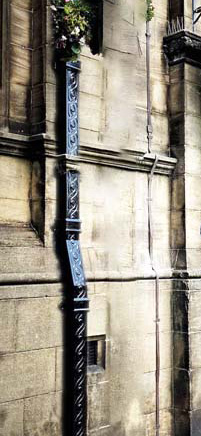


Preserving the Past for the Future
Nestled in the heart of the North West of England, Lancashire boasts a rich tapestry of historical and architectural heritage. Each building tells a part of the county’s storied past, from the grandeur of its stately homes and castles to the quaint charm of its Victorian terraces and mills. However, preserving these period buildings is an ongoing challenge, requiring a delicate balance between maintaining historical integrity and adapting to contemporary needs. This guide explores the critical aspects of conserving Lancashire’s period buildings, emphasising the importance of cast iron in architectural conservation.
Safeguarding Lancashire’s Legacy
Architectural conservation is vital in protecting the physical evidence of our history and cultural identity. In Lancashire, where the landscape is dotted with buildings that have withstood the test of time, conservation efforts serve not only to preserve these structures but also to maintain the county’s unique character and heritage. It’s about respecting the craftsmanship and design of bygone eras while ensuring these historic edifices remain relevant and functional in the modern world.
Durability and Design in Building Conservation
A distinctive feature of Lancashire’s period buildings is cast iron, particularly in guttering, pipes, and decorative elements. Cast iron was favoured during the Victorian era for its durability, versatility, and the intricate designs that could be achieved. Today, these features are functional and serve as a testament to the period’s architectural innovations. Preserving these elements is crucial in maintaining Lancashire’s historic buildings’ authenticity and aesthetic value.
Balancing Authenticity with Modernity
The conservation of period buildings in Lancashire is fraught with challenges—these range from environmental damage and neglect to integrating modern facilities without compromising historical integrity. Additionally, sourcing authentic materials for restoration, such as cast iron for guttering and architectural details, presents its challenges. Despite these obstacles, preserving Lancashire’s heritage buildings is a testament to the commitment of conservationists, local communities, and authorities to safeguarding the county’s architectural legacy.


Ensuring Longevity Through Expertise
The conservation of cast iron elements in period buildings requires specialised knowledge and techniques. This includes assessing the extent of the corrosion, selecting appropriate restoration methods, and applying protective coatings to prevent future damage. Replicating original cast iron designs, often found in guttering, railings, and decorative features, demands a high level of craftsmanship and attention to detail. These efforts are essential in preserving the structural and aesthetic qualities of Lancashire’s heritage buildings.
A Journey Through Time
Lancashire is home to several successful conservation projects highlighting the intricate process of preserving period buildings. From the majestic Astley Hall in Chorley to the industrial heritage of Queen Street Mill in Burnley, these case studies showcase the diverse approaches required to maintain the county’s historical sites. Each project underscores the importance of collaboration among conservationists, historians, and the community to ensure that these buildings continue to tell the story of Lancashire’s past.
A Collective Responsibility
Preserving Lancashire’s period buildings is not solely the domain of experts and authorities. Community involvement plays a crucial role in the conservation process. Initiatives that engage the public, from educational programs to volunteer opportunities, foster a sense of ownership and responsibility towards the county’s heritage. Lancashire can ensure that its historic buildings are cherished and preserved for future generations by involving the community.
The conservation of Lancashire’s period buildings is an ongoing journey that requires passion, dedication, and innovation. Lancashire can continue to showcase its rich architectural heritage by valuing the past and embracing the future. Preserving cast iron elements and adopting modern conservation techniques testify to the county’s commitment to safeguarding its historical buildings.
Looking ahead, the collective efforts of conservationists, communities, and technology will ensure that Lancashire’s heritage buildings remain a vibrant part of its landscape, bridging the gap between history and contemporary life.


Cast iron guttering and downpipes are vital in preserving Lancashire’s period buildings, contributing to architectural conservation and heritage preservation, As a leading supplier of cast iron rainwater systems in the UK, we specialise in providing bespoke solutions for the restoration and conservation of listed and historic buildings.
Tuscan Foundry’s cast iron guttering and pipes offer both aesthetic appeal and historical authenticity, making them ideal for maintaining the integrity of Lancashire’s architectural heritage. By collaborating closely with heritage organisations, conservation groups, architects, builders, and developers, Tuscan Foundry ensures that each project receives tailored solutions that meet the strict standards for historic preservation.
Having been used on numerous conservation projects throughout Lancashire, our cast iron guttering and pipes have proven effective in enhancing the beauty and longevity of heritage buildings. From custom-made components to on-site surveys and consultations, Tuscan Foundry’s expertise ensures that every restoration project is carried out with meticulous attention to detail and adherence to heritage guidelines.
For Lancashire’s period, listed, church, and religious buildings, Tuscan Foundry offers one of the largest ranges of cast iron hopper heads and bespoke patterns and castings tailored to each project’s requirements. With Tuscan Foundry’s assistance, Lancashire’s historic structures stand as enduring testaments to the area’s rich architectural heritage, ready for future generations to appreciate.